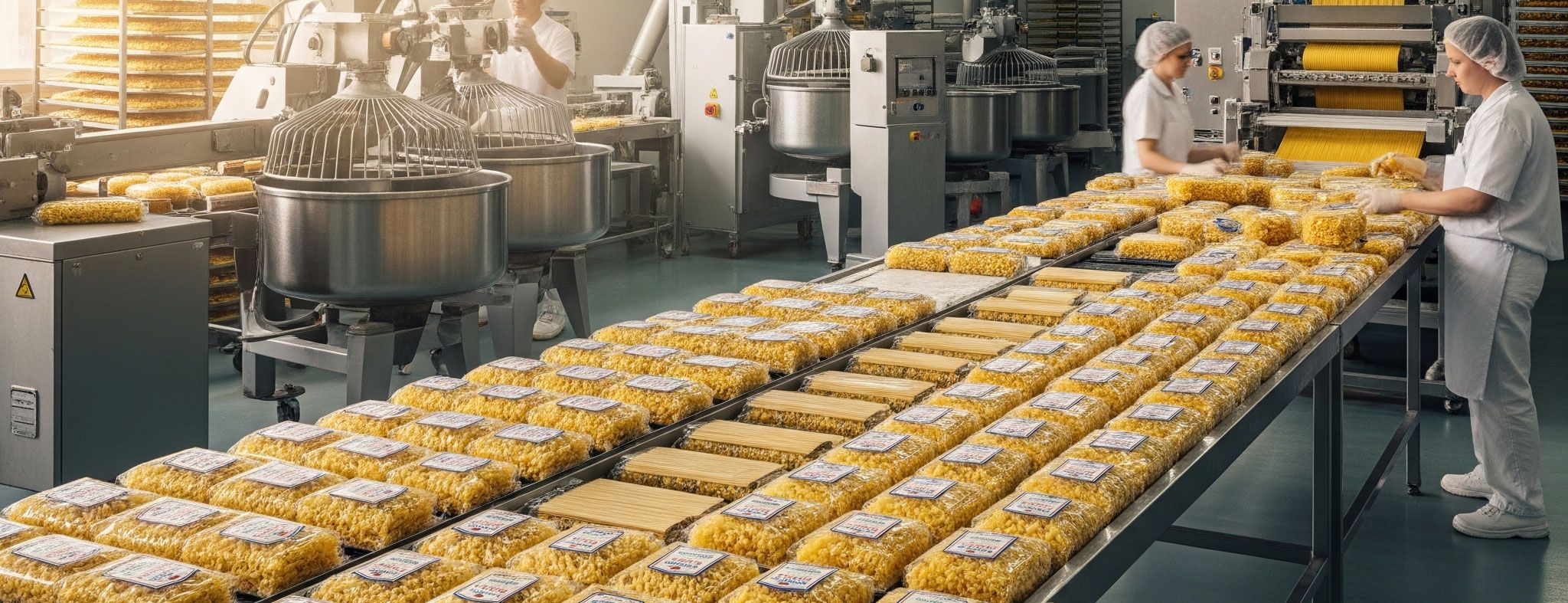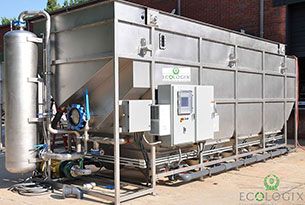For a pasta manufacturer, investing in a Dissolved Air Flotation (DAF) system for wastewater treatment can offer a significant Return on Investment (ROI) through various direct and indirect benefits.

Understanding Pasta Wastewater Characteristics
Pasta manufacturing wastewater is typically high in:
- Total Suspended Solids (TSS): Flour, starch, and other solid particles from processing
- Biochemical Oxygen Demand (BOD) / Chemical Oxygen Demand (COD): High organic content from starches, flours, and potentially oils/greases if sauces or fillings are involved
- Fats, Oils, and Greases (FOG): Present if oil is used in the pasta-making process or if there are associated sauce/filling operations
- Nutrients (Nitrogen, Phosphorus): Less prominent than in some other food industries, but can still be a factor
These characteristics make a DAF system an effective primary treatment method, as it excels at removing suspended solids, FOG, and a significant portion of BOD/COD.
Key Drivers for a DAF System Investment
- Regulatory Compliance and Avoidance of Fines:
- Challenge: Stricter local and national environmental regulations (e.g., EPA Effluent Guidelines in the US) impose limits on contaminants like FOG, TSS, and BOD/COD discharged to municipal sewers (POTWs) or directly to water bodies. Non-compliance can lead to substantial fines, surcharges, operational shutdowns, and reputational damage.
- DAF Solution: A DAF system effectively reduces these pollutants, helping the pasta manufacturer meet discharge limits and avoid costly penalties and surcharges.
- ROI Impact: Direct savings from avoided fines and surcharges can quickly offset a significant portion of the DAF system's capital cost.
- Reduced Wastewater Treatment Costs (Surcharges):
- Challenge: Municipalities often charge industries based on the volume and contaminant load of their wastewater (e.g., per pound of BOD or TSS). High pollutant concentrations result in high surcharges.
- DAF Solution: By significantly reducing TSS, FOG, and BOD/COD, the DAF system lowers the load sent to the municipal treatment plant, leading to substantial reductions in monthly or quarterly surcharges.
- ROI Impact: This is a direct and measurable financial saving that contributes significantly to the payback period. For some food processing facilities, these savings can be tens of thousands of dollars per month.
- Reduced Sludge Disposal Costs:
- Challenge: The concentrated sludge generated from wastewater treatment needs to be disposed of, often at a significant cost per ton for hauling and landfilling.
- DAF Solution: DAF systems typically produce a smaller volume of dewatered sludge compared to other methods, thanks to the higher solids content of the DAF float. This directly reduces hauling and disposal frequency and costs.
- ROI Impact: A measurable reduction in operational expenses.
- Water Reuse and Recycling Potential:
- Challenge: Fresh water is a valuable and increasingly scarce resource. Industrial processes, including pasta manufacturing, consume significant amounts of water.
- DAF Solution: While a DAF system primarily serves as primary treatment, the clarified effluent quality is significantly improved. This makes it a suitable pre-treatment step for further advanced treatment (e.g., ultrafiltration, reverse osmosis) for water reuse in non-contact applications like cleaning, boiler feed water, or irrigation.
- ROI Impact: Reduces freshwater consumption costs, contributes to sustainability goals, and enhances the company's environmental image.
- Improved Downstream Treatment Efficiency:
- Challenge: If your plant has its own biological wastewater treatment plant, high influent loads of TSS, FOG, and BOD/COD can strain the biological system, leading to inefficient treatment, higher aeration costs, and potential upsets.
- DAF Solution: A DAF system acts as an effective primary treatment, significantly reducing the load on downstream biological systems. This can improve the overall efficiency, reduce energy consumption (e.g., for aeration), and extend the lifespan of other treatment components.
- ROI Impact: Lower operating costs for the entire treatment train, more reliable compliance.
Calculating the ROI for a DAF System
Calculating the ROI for a DAF system involves quantifying both the capital investment and the ongoing operational costs and savings.
- Capital Investment: The capital investment for a DAF system typically includes the purchase of the equipment, installation, and maintenance.
- Operational Costs: The operational costs for a DAF system include the costs of operating the equipment (energy and chemical consumption), maintenance, and disposal of sludge.
- ROI: The ROI is calculated by subtracting the capital investment from the total annual operating costs. The ROI is a measure of the net savings per dollar invested.
Typical Payback Periods
For food processing wastewater, DAF systems often have a relatively fast payback period due to significant reductions in surcharges and disposal costs. While specific figures vary widely, some sources suggest payback periods for similar food industry applications can be as short as 6 months to 2 years, especially if chemical usage is optimized or if product recovery is possible. For sludge dewatering, payback periods can be as short as 3 to 16 months.
Conclusion
For a pasta manufacturer, purchasing a DAF system for wastewater treatment represents a strategic investment with a strong potential for a positive ROI. The primary drivers are often the significant reduction in municipal wastewater surcharges and sludge disposal costs, coupled with the avoidance of regulatory fines. Beyond the direct financial gains, the system contributes to environmental sustainability, improved operational efficiency, and potentially water conservation, making it a sound long-term decision for any pasta production facility. Ecologix engineers have experience designing and installing DAF systems for a wide range of food processing and wastewater treatment applications and can help you optimize your wastewater treatment system to meet your specific needs.
If your facility requires an upgrade or replacement of existing equipment, consider Ecologix www.ecologixsystems.com , as your one-stop provider for wastewater treatment systems, including, engineering design, fabrication, installation and startup. For additional information Call (678) 514-2100.
